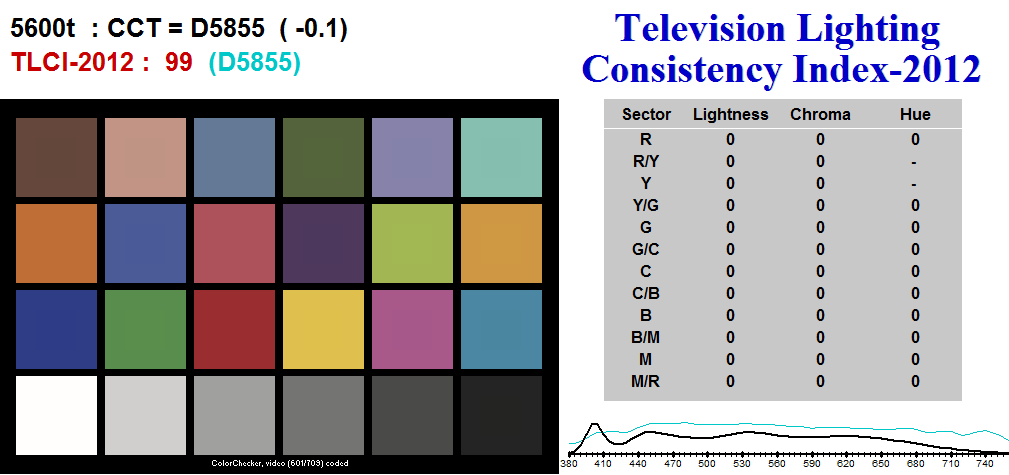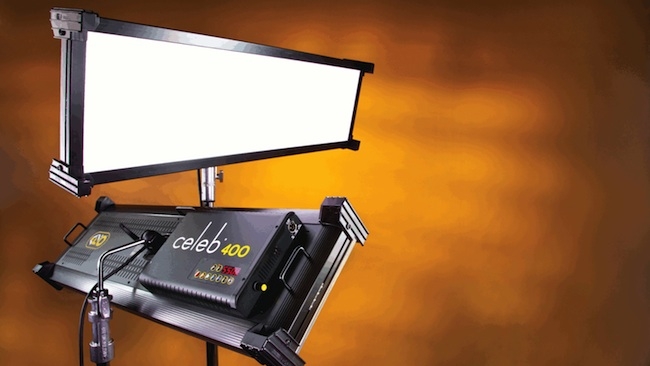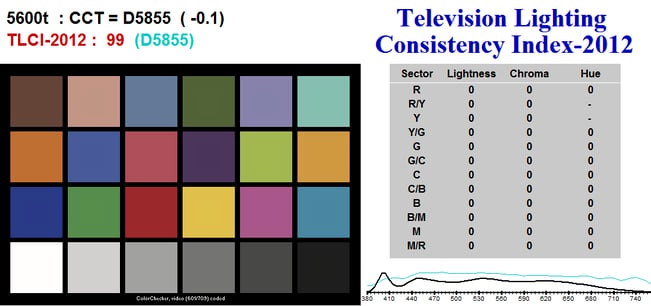
 Already a UV user?
Already a UV user?
RedShark Replay: The white heat of technology - Phil Rhodes talks about white light and a possible means of obtaining it with the minimum possible use of power.
We've discussed white-emitting LED light sources in some detail in the past, and it's encouraging to see that new technology is still on its way through the mill of industrial research and development to improve the situation further.
Let's recap. To date, most white LED light sources have comprised a blue-emitting LED, which is used to illuminate a phosphor which emits yellow light, for a combined total of white. The mechanism here is fluorescence, using much the same mechanism as a blacklight effect in a nightclub or during a stage show, except that what we call a blacklight is invisible, ultra-violet radiation, whereas a blue LED emits light we can actually see.
In general, the rule to apply here is that a light source can make fluorescent objects glow if that glow is at a wavelength longer than the light source. Deep blue light is about the shortest-wavelength light we can see, and it can make pretty much any other fluorescent colour glow, including yellow, because blue has a shorter wavelength than anything else in the visible spectrum

Figure 1
In the same way, a green light (green laser pointers work if you want to try it) can make fluorescent orange objects glow, but not blue objects, because the green light has a longer wavelength than the blue.
This shift in wavelength is called the Stokes shift. There are, technically, exceptions, but they don't have much impact on the sort of lighting we use for film and television. The numbers, though, are fairly extreme. Blue LED light has a wavelength of about 450 nanometres, equal to a frequency of about 670 terahertz. Or, in the terms of your radio tuning dial, six hundred and seventy million megahertz. If your computer's processor is clocked at 3GHz, a speed which will permit it to do mathematics at a rate that appears to be witchcraft, the oscillation involved with blue light takes place nearly a quarter of a million times per clock cycle. Light is fast.
So, to date, the blue component in the output of a white LED has been directly sourced from the LED, whereas the rest of the white light output comes from a phosphor. A blue light can't fluoresce a blue-emitting fluorescent dye. This looks okay, but coloured LEDs have a fairly narrow output and the resulting light generally has a noticeable spike in the blue. This uneven spectrum is the cause of notorious colour-rendering problems with white LEDs.

Figure 2
As TV shows like CSI have shown us, however, it's now possible to make LED flashlights which emit UV light. They can be purchased cheaply on the internet (safety concerns notwithstanding). So, in theory, we could build a white LED light source where all of the output comes from fluorescence – and in fact, it's been done. White LEDs using either very deep violet or UV sources, whose entire (or very nearly entire) visible output comes from phosphors, have started to become available. Old style white LEDs compare to newer UV types like this:

Figure 3
The CRI and TLCI numbers for these things can be enormously impressive. Manufacturer Yuji International, which supplies phosphors and associated parts to the white LED industry, has published data suggesting a TLCI of 99 at 5600K in which the required-correction data is a field of zeroes, with just two single increment negative hue adjustments in the red-yellow region. The technology is reputedly already in use in the Kino-Flo Celeb LED.

[Figure 4: courtesy Beijing Yuji Science and Technology Co., Ltd)
It's not a perfect solution, since the conversion of short-wavelength UV light into longer-wavelength broad spectrum white light is inherently lossy. Short wavelengths imply a greater energy than long ones, so there's no way of making that conversion without loss, and UV-driven white LEDs are, therefore, technically less efficient than blue-driven white LEDs no matter how good we make the LED drivers themselves. Even so, efficiency is reasonable, and should track with general improvements in LEDs.
So far, white LEDs have been viewed with some suspicion by discerning cameramen. While the very best types, usually using a mixture of emitter varieties, can diffuse the problem to the point of usability, it seems quite likely that this new approach might be the long-term answer to the problem.
Tags: Technology



Comments